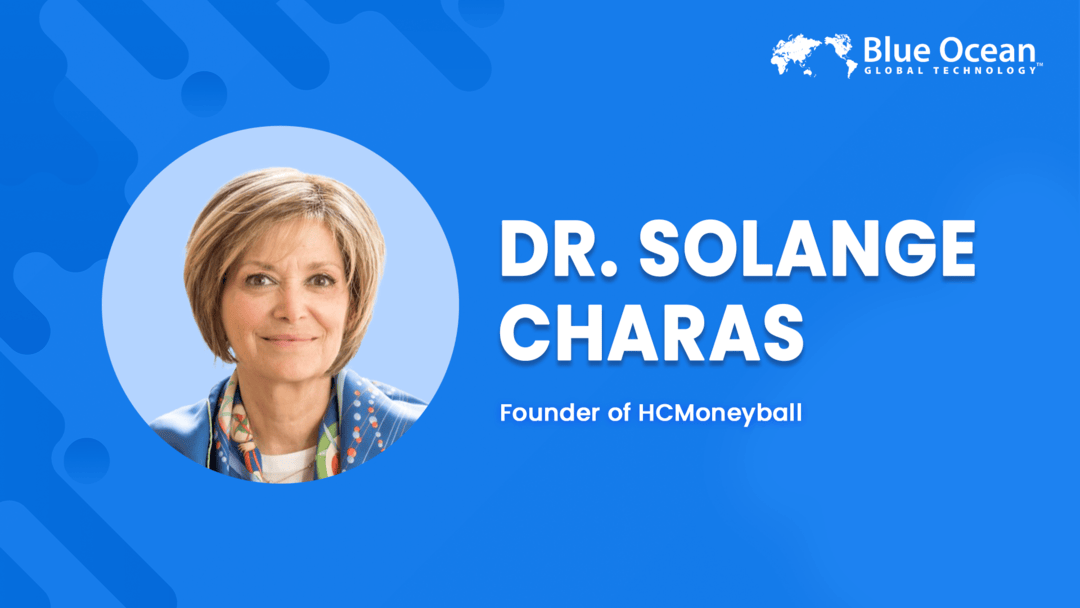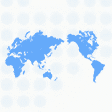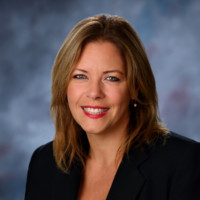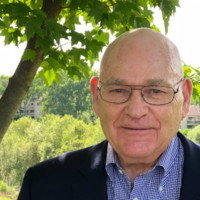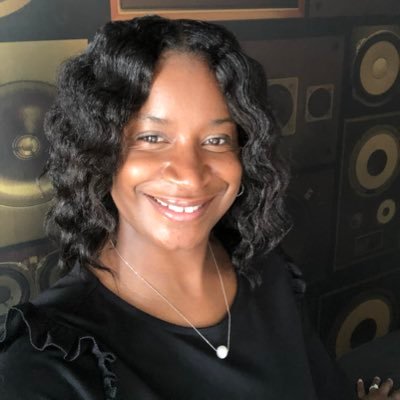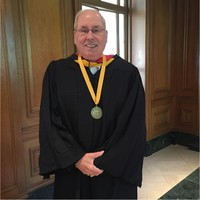About Dr. Solange Charas
![Dr Solange Charas [Founder of HCMoneyball] Dr Solange Charas [Founder of HCMoneyball]](https://www.blueoceanglobaltech.com/wp-content/uploads/2025/05/1660069844837-1.jpg)
Dr. Solange Charas is a Professor of Professional Practice at Columbia University, teaching in the Master of Science in Human Capital Management program, and the Founder of HCMoneyball. She is a seasoned Human Capital expert with over 25 years of experience spanning consulting, executive leadership, and board governance across industries. A co-author of Humanizing Human Capital, she is known for blending data analytics with human-centric strategies to drive measurable business results. With a PhD in Designing Sustainable Systems with a focus on corporate governance, and an MBA in Accounting and Finance, Dr. Charas has developed proprietary tools to assess ROI on human capital and improve team performance. She has led over 70 M&A transactions and is a certified team coach with global experience and fluency in five languages.
She serves as a founder of HCMoneyball, Principal Distinguished Research Fellow and sits on the Advisory Board of The Conference Board, and is a member of the International Standardization Organization (ISO) Technical Committee focused on creating, revising, and reviewing Global Human Capital Standards. Her passion lies in transformation, purpose-driven leadership, and redefining HR as a value-creating business function.
Could you tell us about your professional journey – what inspired your passion for Human Capital, and how you evolved into becoming a top expert across consulting, executive leadership, and academia?
I got into HR by accident. It’s not my formal training; I got into HR because I wanted to be a consultant. It just so happened that my consulting offer was in HR, at an HR consulting firm.
When I graduated, around 1987, when the market crashed, I planned to go into financial services. I wanted to underwrite short-term commercial paper at Merrill Lynch.
While I was doing my MBA, I spent a lot of time conducting informational interviews with people in roles I thought I might enjoy. I wanted to understand what they did day to day, what the challenges were, and what gave them intrinsic rewards. Back then, we didn’t have LinkedIn or the internet. So, I built my network the old-fashioned way—on a Rolodex.
Regarding financial services—my original plan—I had three job offers in that field and one in consulting. But 1987 brought a market crash, and many companies instituted hiring freezes. I was wary of being last in, first out, so I chose the consulting job as a placeholder until the market stabilized. Back then, job hunting was simpler. There were more jobs than workers. Ghosting didn’t exist. Job postings were real, and so were applicants.
I ended up interviewing with the consulting firm because a classmate told me, “You’ll like these people, they’re your kind of people.” I didn’t even know what they did. I thought they just evaluated jobs and created base salary structures. They also had a small executive compensation practice. So, I said, “Okay, I’ll do this for a year.”
But then I fell in love with the process of consulting. I loved being a detective, digging for the root causes behind organizational problems. Often, what the client presented wasn’t the real problem but a symptom. I enjoyed designing solutions and handing them off for implementation—very transactional. You’re regarded as a subject matter expert. My core capability is problem solving, like identifying how we get from A to B in the most effective way. So, consulting suited me perfectly.
From that first firm, I transitioned from doing base salary and job evaluation work into executive compensation. In executive comp, you need to understand the balance sheet, the income statement, and how proposed incentive plans impact taxation and accounting—what gets taxed, what’s a variable versus fixed expense. I finally got to use what I studied. An executive comp consultant has to be both a technician and a psychologist—it’s all about understanding what will truly motivate executives to perform at higher levels and create a financially-rationalized incentive for higher levels of individual and corporate performance. I found my niche. From the Hay Group, I moved into the accounting world.
I worked at Ernst & Young (now EY) and Arthur Andersen. At Arthur Andersen, I became the executive comp consultant for a global French company with about $8 billion in revenue. The firm kept sending consultants to pitch the client, but the executives didn’t connect with any of them until me. My heritage is French, my name is French, and I speak French. When I walked into the room, I knew exactly how to connect. There was an immediate sense of kinship. That time, they threw the right noodle at the wall, and it stuck. I became their relationship manager for everything related to compensation and executive comp. Eventually, I transitioned to be the CHRO for that organization!

How did HCMoneyball happen, and what does a typical day look like for you as the founder of HCMoneyball and a Professor of Practice at Columbia University?
I’m lucky to be able to do both at the same time. What made me different as an HR professional is that I brought a finance and accounting framework to the function. Historically, HR didn’t even have a financial language. Even today, many HR professionals lack financial literacy. Most, especially at senior levels, don’t have data analytics capabilities and don’t think about HR in terms of driving profit. That’s what I brought to the function.
After I left consulting, I went into corporate and served as CHRO for three organizations. In each, I transformed the HR function into a profit center. It was previously unimaginable for a CEO to say, “I’m paying you and your staff, and you’re actually generating profit.” But I did it in multiple ways. I lived the experience of turning HR into a profit center and quantifying the economic value that human capital, in the aggregate, produces for an organization. That’s what HCMoneyball is all about. I no longer do traditional consulting. What I do now is work directly with CHROs and CFOs to quantify the material and financial impact that human capital is generating for the company.
I think of my work as a Rosetta Stone between HR and finance. I translate the artifacts, results, and outcomes of HR—things like KPIs—into financial language to demonstrate the material impact on corporate financial outcomes. This allows us to measure the effectiveness and efficiency of the HR function as a driver of economic value creation. That’s my core work now. And the HR leaders who get it understand that they must approach HR as a business case exercise. We are reframing the perception of HR from a cost center to an economic value driver.
Now, how do I balance that with being a full-time professor? I’m incredibly fortunate that my role is “Professor of Professional Practice,” which is becoming more common in academia. These roles are designed to bridge the gap between academic research and real-world application. At Columbia, my program is known as a scholarly practitioner program. We teach students to think like scholars and researchers while equipping them with tools to apply that knowledge in practice.
As a Professor of Professional Practice, I’m required to be in the field one day a week. I’m evaluated not only on my academic contributions, like research, teaching, course design, and student mentorship, but also on my ability to stay engaged with the real world. That engagement ensures I bring current, relevant insights back to the classroom.
I also do a lot of pro bono work focused on women’s issues. I work with Invest Ahead, formerly The 30% Coalition, which advocates for placing diverse directors on boards. I’m involved with PowHer New York, which focuses on women’s economic parity and rights advocacy. I also work with Gretchen Carlson and Julie Roginski’s organization – Lift Our Voices – which championed legislation banning forced arbitration of sexual harassment litigation in the workplace . That work is incredibly meaningful to me.
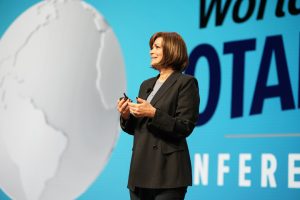
What qualities or behaviors do you believe separate exceptional human capital leaders from those who simply manage their functions?
I believe HR leaders, especially CHROs, shouldn’t see themselves merely as leaders of a function. They must see themselves as leaders/partners of the business. What I teach my students is this: You might be passionate about HR and its programs, but if you can’t directly link the value of what you’re doing to either customer outcomes or business performance, you’ve missed the point. As Dave Ulrich says, “HR doesn’t exist for HR’s sake. It exists to support customers and to help the company achieve sustainable outcomes.”
Sustainability is becoming a major issue. For example, just this morning there was news about China refusing to accept Boeing 737 MAX. China is one of Boeing’s largest customers. That kind of business development has real implications for organizational longevity. According to the American Enterprise Institute, since 1955, nearly 89% of the Fortune 500 companies are no longer on the list. They either went bankrupt, were acquired or have simply fallen behind. Sustainability requires resilience, adaptability, and a forward-looking strategy.
At the end of the day, every CEO’s mission is sustainable profit or shareholder primacy. We had a moment with stakeholder capitalism promoted by the Business Roundtable where the focus was on 5 stakeholders including investors, but in today’s climate, I believe we’re swinging back toward shareholder primacy. CEOs are under pressure to deliver profits and ensure organizational survival. In our U.S. economy, 86% of GDP comes from services. Until bots and technology can fully deliver those services, we still need people. And frankly, I think we’ll always need people. Technology should augment humans, not replace them. While some displacement is inevitable, humans still play a critical role, especially in areas like judgment, problem-solving, innovation, and adaptability.
So what sets exceptional CHROs apart? First, they understand their business model. They have financial literacy. They are able to quantify the material impact of HR programs, the HR function, and the people across the organization in terms of sustainable profit.
The second is around data competencies. In every area outside of HR, we make decisions with data. But in HR, we still rely on our gut—and that needs to change. I always tell my students: understand your business. Know what makes money in your industry. Translate the human capital experience into financial impact. Use data analytics to reduce subjectivity in decision-making, and communicate in the language of business – which is a financial language.
That’s a core message in our book, Humanizing Human Capital:Invest in Your People for Optimal Business Returns. Data analytics should humanize human capital, not dehumanize it. Data gives you insights that help you make decisions for the greater good of the organization, not just for the loudest voices in the room.
The third essential trait is being a strong communicator. If you can’t tell a compelling story—one that inspires people to act, and is grounded in data or reliable evidence —you won’t be effective in your role.
And finally, empathy. We’re still human, after all. You need to understand what motivates people. If 50% to 60% of a company’s expenses go toward its people, then we need to ensure those people are aligned, engaged, performing, innovating, problem-solving—all the things that drive business success.
I often say HR shouldn’t just have a seat at the table. HR is the table. Nothing in a company happens without people. And that’s what we are responsible for.
What’s one of the most rewarding projects that you’ve worked on in this space, and what made it stand out?
One of the most rewarding projects I’ve worked on was with a client just a few months ago, a Chief People Officer who not only secured the $161 million budget increase she originally sought but ended up receiving an additional $100 million. The “win” was, of course, helping her build a compelling business case. But the real impact, and what made it so meaningful for me, was that we fundamentally transformed how HR is perceived in that organization.
Historically, HR has been viewed strictly as a cost center. But in this case, we shifted that narrative. HR became seen as a strategic investment, a driver of measurable economic value. That’s a massive cultural shift. Now, the executive team understands that investments in human capital can generate quantifiable returns, and they’re using metrics to track that impact.
One of the key tools we used was HCROI (Human Capital Return on Investment.) It’s what I consider the “mother of all indicators” for human capital effectiveness and efficiency. It’s directly tied to profit—it’s a tautology of profit and a precursor to it. HCROI is based on revenue, expense, and the cost of human capital, two of which (revenue and expense) are also used in calculating profit. When over 50% of a company’s expenses go toward people, improving the effectiveness of that spend inevitably drives profitability.
That’s what made the project so satisfying, not just that we delivered a financial win, but that we drove a cultural transformation. HR is now understood as a value creator, not just a cost to be managed. Executives began asking the right questions: what’s the return on this investment in people? How does it affect the bottom line?
And this isn’t a one-off. Another client invested just $250,000 in an employee engagement initiative. Using data, we showed it led to increased productivity, lower attrition, and ultimately, a $65 million profit impact. That’s a 260x return. What other function in the organization can deliver that kind of ROI?
There’s also a risk management component to all this. HR isn’t just about managing costs, it’s about avoiding future losses through better retention, compliance, training, and development. When you invest strategically in people, you’re not just affecting the expense side of the income statement, you’re also driving revenue, which flows straight to the bottom line.
That project was so rewarding for me because I changed the mindset of executive management, and my whole life, I’ve been about affecting transformation.
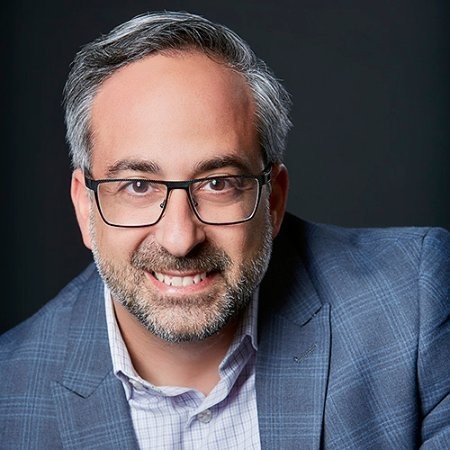
You co-authored Humanizing Human Capital – What core message from the book do you think the business world needs to hear most right now?
The core message of the book is right in the subtitle: “Invest in Your People to Optimize Business Returns.” When Stella Lupushor and I wrote the book, there was this growing sentiment that using data and analytics in HR was “dehumanizing.” Our argument is the opposite: it’s actually humanizing because data allows you to hear the real signals coming from your organization.
When analytics are done well—looking at data by segment (age, function, division, level, etc.)—you start to hear the voice of the organization more clearly. That helps leaders make decisions that serve the greatest number of people, not just the loudest voices. Or as I like to say (and any Star Trek fan will get this): “The needs of the many outweigh the needs of the few.”
We organized the book around the employee life cycle, using a human-centric approach to every aspect of human capital management. But we didn’t just talk theory, we provided roadmaps. For every chapter and program discussed, we offer tools to quantify the ROI of those initiatives. It’s about helping HR professionals and business leaders use data to build compelling business cases that move HR from a cost center to a driver of economic value creation.
The book is really a bridge between where organizations are now and where the future of HR is headed. We use data analytics to show how a dollar invested in people can return three, four, even five dollars when done thoughtfully and strategically.
This isn’t just conceptual. There are real-world examples validating this approach. For instance, Irrational Capital, founded by Dan Ariely (a behavioral economist), and David Van Adelsberg, created a methodology to assess companies based on their human capital performance, using sophisticated analytics to understand how intrinsic and extrinsic signals can indicate an organization’s ability to create economic value through people. One of the exchange-traded funds (EFT) they launched (HAPI), is composed of top-performing S&P 500 companies based on their approach – The Human Capital Factor. In 2024, HAPI returned 30%, far outperforming the index at 18%. That’s solid evidence that that healthy human capital can drive business success.
While they use primary data and proprietary methods, I use secondary data and academically validated metrics—things like HCROI (Human Capital Return on Investment), HCVA (Human Capital Value Add), and HEVA (Human Economic Value Add) and others. And the data tells a powerful story: if a company spends more than 50% of its expenses on people, just a 5% improvement in HCROI can lead to 15–20% profit growth. That’s huge.
For the first time, we’re able to quantify the financial contribution of good human capital management, not just intuit it. This is incredibly valuable for investors, who have long lacked transparency into the HR function. While some reporting requirements have improved since 2020, companies still control what they disclose. With ESG reporting and DEI disclosures diminishing, external transparency may shrink. That’s why the onus now falls internally. Companies must analyze, understand, and act on their own people data, even if they’re not required to report it.
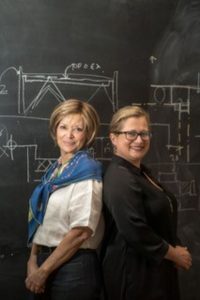
Is there a code or philosophy that’s been a guiding compass through both the challenges and triumphs of your career?
For me, the guiding principle throughout my career has been flow. If you hold on too tightly to anything—an idea, money, power, or position—you disrupt that natural flow. This concept is rooted in both Hinduism or Buddhism and the philosophy resonates with me deeply.
Flow, impact, and transformation have been consistent themes in my life. I believe in letting energy, ideas, and opportunity move freely. That mindset has served me well emotionally, intellectually, and professionally. I’ve always been drawn to change, even though most people resist it. I know that sounds ironic coming from someone who’s lived in the same apartment for nearly 30 years but for me, it’s ideas that evolve. And that’s where the real movement happens.
My focus has never been solely on titles or financial gain. It’s always been about transformation and impact—helping others think and act differently, and evolve. I believe that if I focus on purpose, the outcomes will follow. Money and recognition come as byproducts of doing meaningful work. In the classroom, I see myself as a servant instructor, not there to critique or police, but to empower. My mission is to support others’ learning, growth, and transformation. I show up to serve. That’s at the heart of my teaching philosophy.
At the same time, I’m also a realist—some might say a pessimist. I hope for the best, but prepare for the worst. I’ve seen how easily things we take for granted—social security, healthcare, free speech, personal rights—can be threatened. My parents immigrated here legally in 1961, and I was born in the U.S., but there was a moment when I wondered: Am I still safe? When we heard talk of mass deportations, including Dreamers, I thought, What if that includes me someday? That fear may sound irrational, but history has taught us that rules and definitions can shift – like they did during World War II with European Jews. They thought they were protected by law, and the laws changed so that they no longer had any laws protecting them. So yes, I worry, but I also stay rooted in hope.
Outside of work, do you have any passions or hobbies that help you stay grounded and inspired?
I’m a mom to a small dog. She’s my companion and soul.
I also love science fiction, so I read a lot of science fiction. I also listen to books on tape—Audible—so I download the books and listen to them as I’m commuting, because that’s the only free time I have.
My third passion is craft work—anything that requires me to use my hands. I knit, crochet, build miniatures, and garden. I have a little terrace and a garden. I also paint and cook. I am drawn to creative things that are not “thoughtwork”.
I have intellectual output, and then I have creative output. I build things, not only ideas, but physical things as well. My hands are going all the time. I’m a multitasker. In the evenings, after I finish teaching, I need my brain to relax, so I watch TV. That’s entertainment for me. But while I watch, I’m doing something with my hands. I should say I don’t watch TV—I listen to TV while doing some arts thing. That’s my outlet and passion.

Conclusion
Whether transforming organizational cultures, redefining the role of HR through data, or mentoring the next generation of leaders, Dr. Solange Charas brings a visionary yet grounded approach to everything she touches. Rooted in purpose and driven by impact, Dr. Charas continues to shape the future of work, always with humanity at the core.
Do you have a personal or professional story that can inspire other people into becoming the best version of themselves?
You are welcome to share your journey with our audience.

